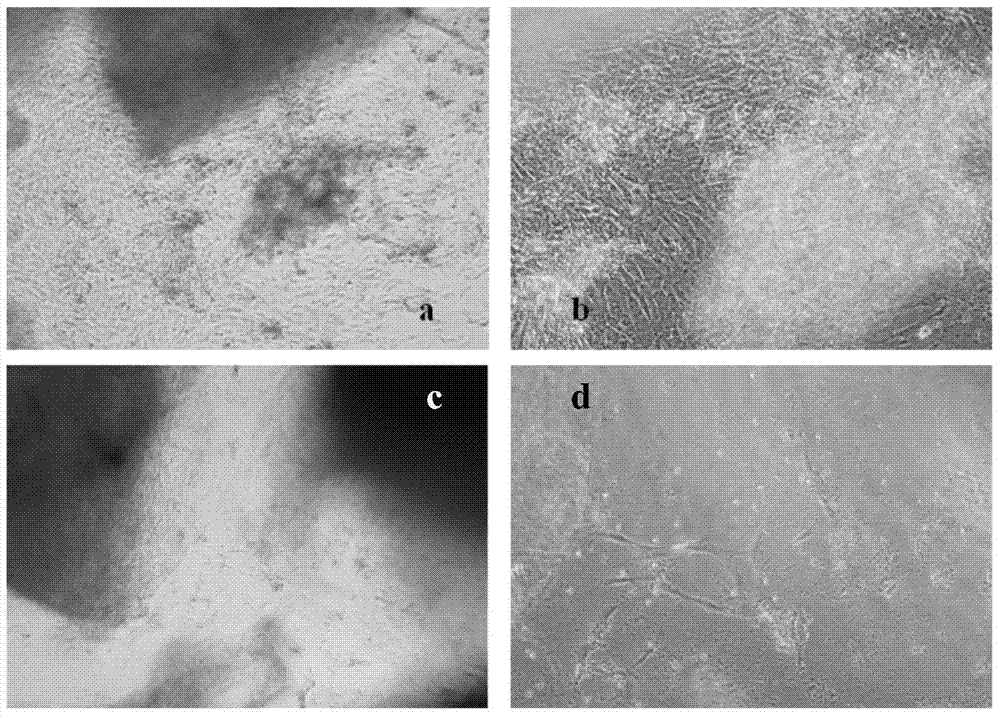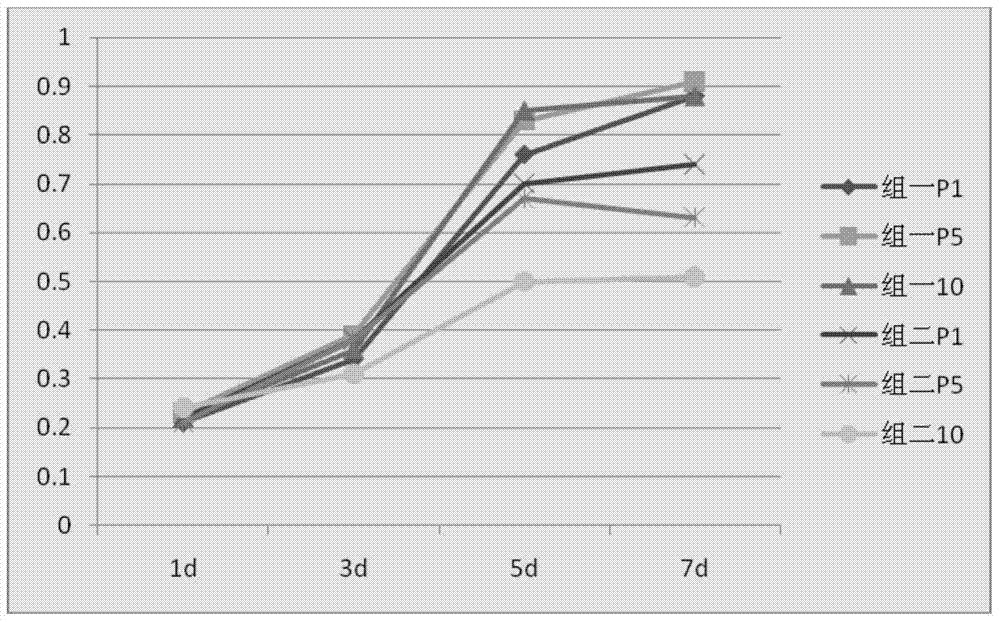A kind of culture method of human umbilical cord mesenchymal stem cells
A culture method and stem cell technology, applied in the field of stem cells, can solve the problems of easy aging of cells, pollution, insufficient cell purity, etc., and achieve the effect of strong cell viability and proliferation ability, short primary generation time, and maintaining shape.
- Summary
- Abstract
- Description
- Claims
- Application Information
AI Technical Summary
Problems solved by technology
Method used
Image
Examples
Embodiment 1
[0037] Embodiment 1, the cultivation of human umbilical cord mesenchymal stem cells
[0038] Under sterile conditions, the umbilical cord tissue discarded after delivery was transported back to the laboratory in PBS containing double antibody. Use 100mL of sterile PBS to clean the blood on the surface of the umbilical cord, disinfect the surface of the umbilical cord with 100mL of 75% ethanol, and then wash it several times with 100mL of PBS to remove the blood as much as possible. Arteries, cut the umbilical cord to a size of 1mm 3 to 3mm 3 Distribute the tissue pieces in the petri dish at an interval of 0.5cm-1cm, let it air dry for 40min, add 0.08mL / cm 2 complete medium at 37°C, 5% CO 2 After static culture in the incubator for 3 days, add 0.08mL / cm 2 After most of the tissue blocks have cells crawling out, remove the tissue blocks, wash several times with PBS, add 0.18mL / cm 2 complete medium. After most of the cell colonies grow into sheets, they can be passaged.
...
Embodiment 2
[0041] Embodiment 2, the cultivation of human umbilical cord mesenchymal stem cells
[0042] Under sterile conditions, the umbilical cord tissue discarded after delivery was transported back to the laboratory in PBS containing double antibody. Use 50mL of sterile PBS to clean the blood on the surface of the umbilical cord, disinfect the surface of the umbilical cord with 150mL of 75% ethanol, and then wash it several times with 150mL of PBS to remove the blood as much as possible. After cutting the umbilical cord into small pieces about 1-3cm long, remove the outermost membrane of the umbilical cord and the veins and arteries , cut the umbilical cord to a size of 1mm 3 to 3mm 3 Distribute the tissue pieces in the petri dish at an interval of 0.5cm-1cm, let it air dry for 20min, add 0.07mL / cm 2 complete medium at 37°C, 5% CO 2 After static culture in the incubator for 3 days, add 0.07mL / cm 2 After most of the tissue blocks have cells crawling out, remove the tissue blocks, ...
Embodiment 3
[0045] Embodiment 3, the cultivation of human umbilical cord mesenchymal stem cells
[0046] Under sterile conditions, the umbilical cord tissue discarded after delivery was transported back to the laboratory in PBS containing double antibodies. Use 150mL of sterile PBS to clean the blood on the surface of the umbilical cord, disinfect the surface of the umbilical cord with 50mL of 75% ethanol, and then wash it several times with 50mL of PBS to remove the blood as much as possible. After cutting the umbilical cord into small pieces about 1-3cm long, remove the outermost membrane of the umbilical cord and the veins and arteries , cut the umbilical cord to a size of 1mm 3 to 3mm 3 Distribute the tissue pieces in the petri dish at an interval of 0.5cm-1cm, let it air dry for 60min, add 0.1mL / cm 2 complete medium at 37°C, 5% CO 2 After static culture in the incubator for 3 days, add 0.1mL / cm 2 After most of the tissue blocks had cells crawling out, remove the tissue blocks, wa...
PUM
 Login to View More
Login to View More Abstract
Description
Claims
Application Information
 Login to View More
Login to View More - R&D
- Intellectual Property
- Life Sciences
- Materials
- Tech Scout
- Unparalleled Data Quality
- Higher Quality Content
- 60% Fewer Hallucinations
Browse by: Latest US Patents, China's latest patents, Technical Efficacy Thesaurus, Application Domain, Technology Topic, Popular Technical Reports.
© 2025 PatSnap. All rights reserved.Legal|Privacy policy|Modern Slavery Act Transparency Statement|Sitemap|About US| Contact US: help@patsnap.com



